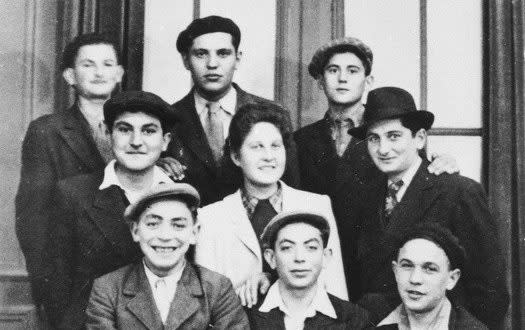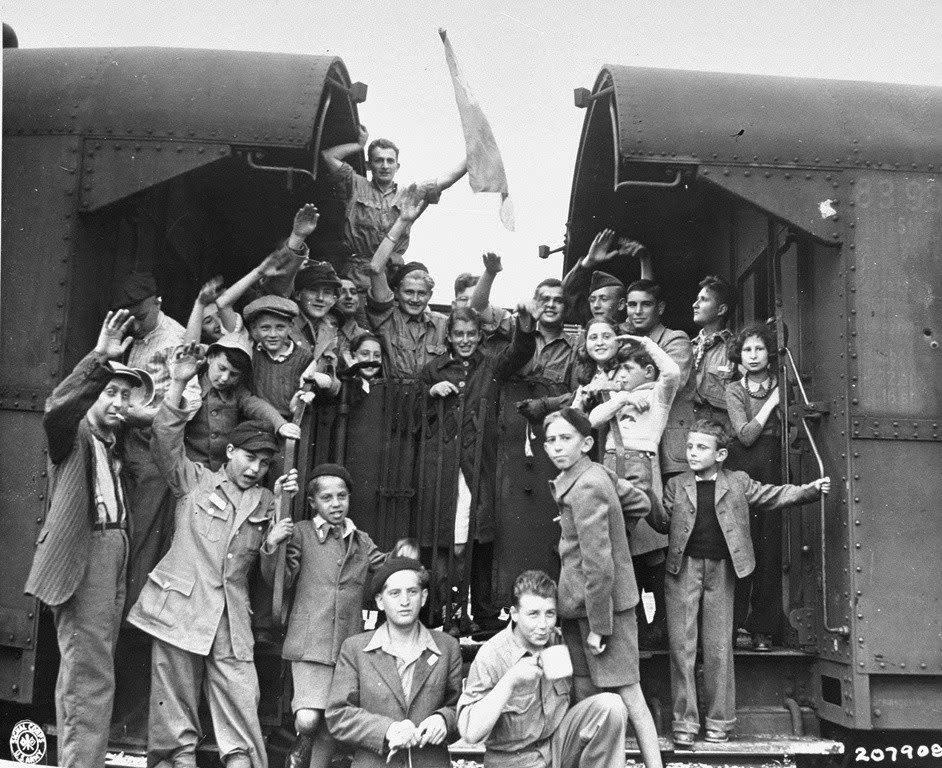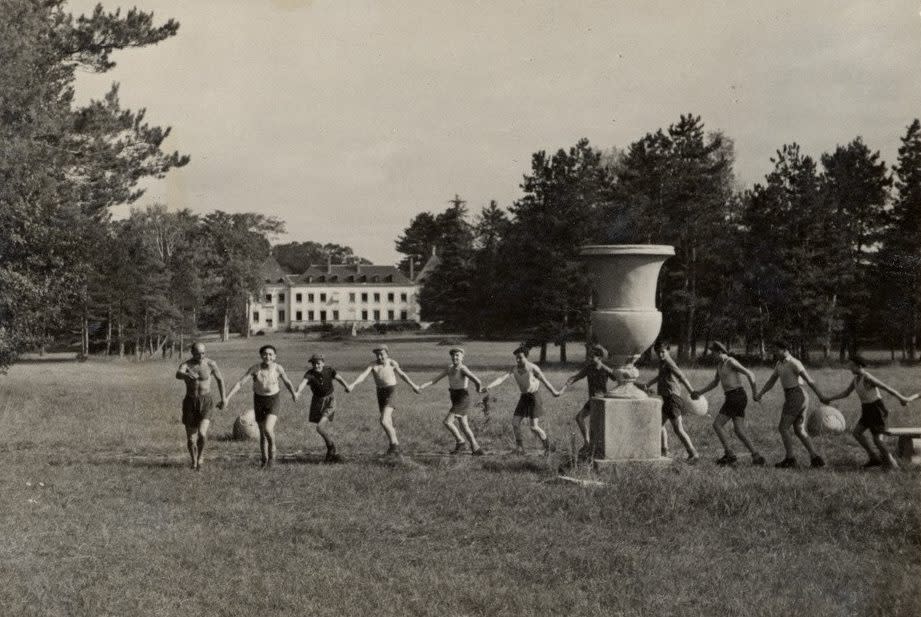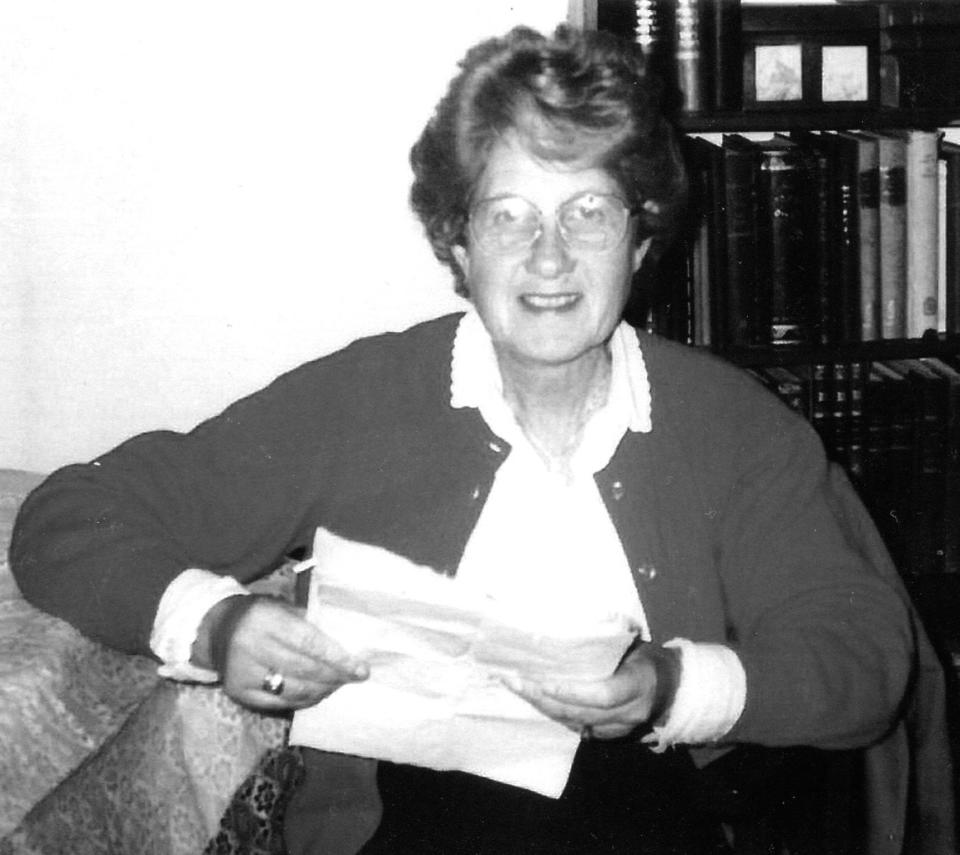Judith Hemmendinger, headmistress of an orphanage for boys liberated from Buchenwald – obituary
- Oops!Something went wrong.Please try again later.
- Oops!Something went wrong.Please try again later.

Judith Hemmendinger, who has died aged 100, dedicated her life to the child survivors of the Holocaust, first as a hands-on social worker during the war, helping hidden Jewish children while hiding from the Nazis herself, and then after the war, as headmistress of an orphanage rehabilitating children liberated from Buchenwald.
Of the 1,000 boys found alive by American soldiers in the concentration camp on 11 April 1945, 426 were sent to France, of which around 90 – the most religious, who required kosher food – were housed at Chateau d’Ambloy in the Loire. They were mostly teenagers, rebellious, and filled with rage. When Judith Feist (as she then was) arrived at Ambloy as a volunteer, she found the director was overwhelmed.
One of the boys in her care was Elie Wiesel, who would later win the Nobel Peace Prize. He recalled that the orphanage staff seemed “to belong to another universe... did you know, Judith, that we pitied you? […] You thought you could educate us, and yet the youngest of us knew more than the oldest amongst you, about what existed in the world.”
Judith soon took over as director, although she was only 22, with the help of another girl, Niny. Being close in age to the children helped. “We accepted the boys as they were, simply trusting them without trying to force anything upon them,” she recalled.

The results were impressive. “All the children could have chosen violence or nihilism but you succeeded to direct us toward confidence and reconciliation,” wrote Wiesel later. “You bet on us to recover. Judith, do you realise how much you meant to our existence?”
In October 1945 the school moved to Chateau de Vaucelles in Taverny, near Paris. Judith stayed until September 1947, when the final boy was found a permanent home.
She waited anxiously for the first reports to come back from her boys (“nos enfants”), now settled with distant cousins in Spain and America, and was distraught when their letters complained of being told to forget, and being treated like “museum pieces” because of the numbers tattooed on their arms. The boys told her they were saving up to come “home” to Taverny and their “real brothers”.

But since Taverny had shut, and their futures lay elsewhere, she judged it kinder not to reply; later, she tortured herself with regret for losing contact.
In 1965, however, the Buchenwald boys invited her as an honoured guest to their 20th anniversary reunion dinner in New York. She was delighted to find that, by and large, they had thrived: most were working, often in high-powered jobs; the majority had married, and most of those marriages had lasted.
This led her to challenge the prevailing assumption that survivors of the Holocaust were inevitably damaged beyond repair, “hopeless and helpless, a group of people to be written off”. The picture was distorted, she believed, because most Holocaust survivors refused to speak about their experiences. Silence was a defence mechanism: “All they want is to behave like everyone else, as if they hadn’t been through anything, so that no one would suspect them of being ‘survivors’,” she observed.
The trust she had won in 1945-47, however, meant that her boys were prepared to share memories with her that they would not even tell their wives or children. At Wiesel’s urging, she collected 60 of their testimonies, 15 of which she published in 1981 as a doctorate, and then as a book, The Children of Buchenwald, which was widely translated.
Another Buchenwald boy, Robert Krell, wrote in the introduction that it was precisely because Judith had not been in the camps that she was able to give them “the human ingredients necessary to help recapture trust, self-esteem, ordinary joy and a renewed respect for life – and death”.

Judith Feist was born on October 2 1923 in Bad-Homburg, near Frankfurt, to wealthy orthodox Jews, in a villa with a grand garden. Her father was a mining engineer and her mother was a zoologist and botanist.
The “golden” period of her childhood ended aged six, she recalled, when they moved to Paris, and she had to adapt to a secular education and a new language. As news filtered west of pogroms and concentration camps, she developed insomnia.
When the Germans invaded France, her father was eventually deported to Drancy, then Auschwitz, where he was killed on the day he arrived. The mother hid in the Free French zone with her two youngest children, the other three hidden elsewhere.
Judith worked in a youth hostel for orthodox Jews in the Free French zone. After the Germans occupied the whole of France, she went in January 1943 under false papers to Taluyers, a covert Zionist agricultural collective near Lyon.
There she met her Claude Hemmendinger, whom she would marry in 1948.
In September 1943 she escorted her mother over the Alps into Switzerland, where they were imprisoned, then detained in a refugee camp. Judith trained with the Jewish aid organisation OSE (Œuvre de secours aux enfants) as a social worker, interviewing children who had arrived with false papers to help them locate their families. In 1945, OSE sent her to Ambloy.
In 1948, she and Claude emigrated to a kibbutz in Israel; then, after a 20-year spell back in Strasbourg, they settled in Jersualem. They had three children.
In 2003, she was made a Chevalier de la Légion d’honneur.
Judith Hemmendinger, born October 2 1923, died March 24 2024

